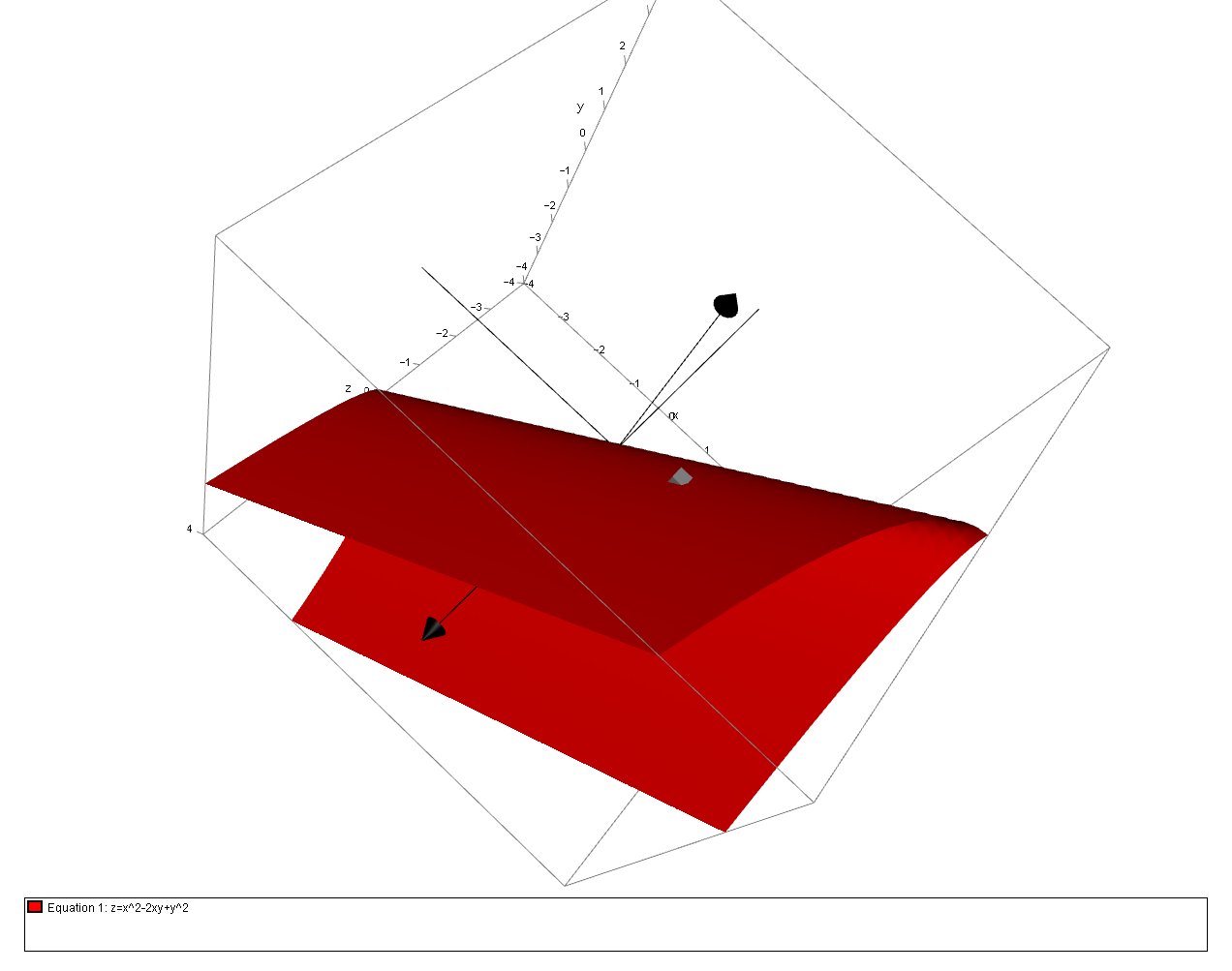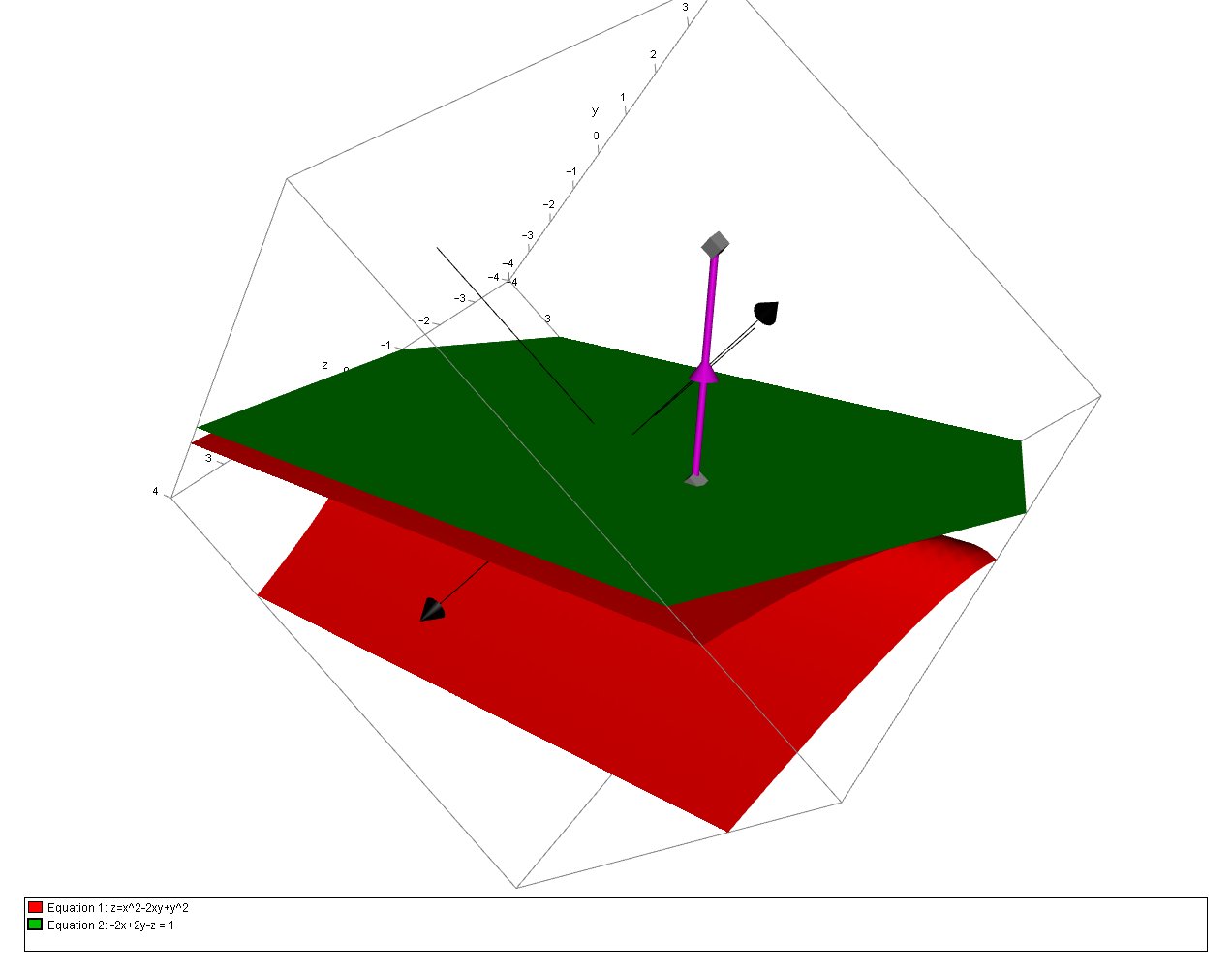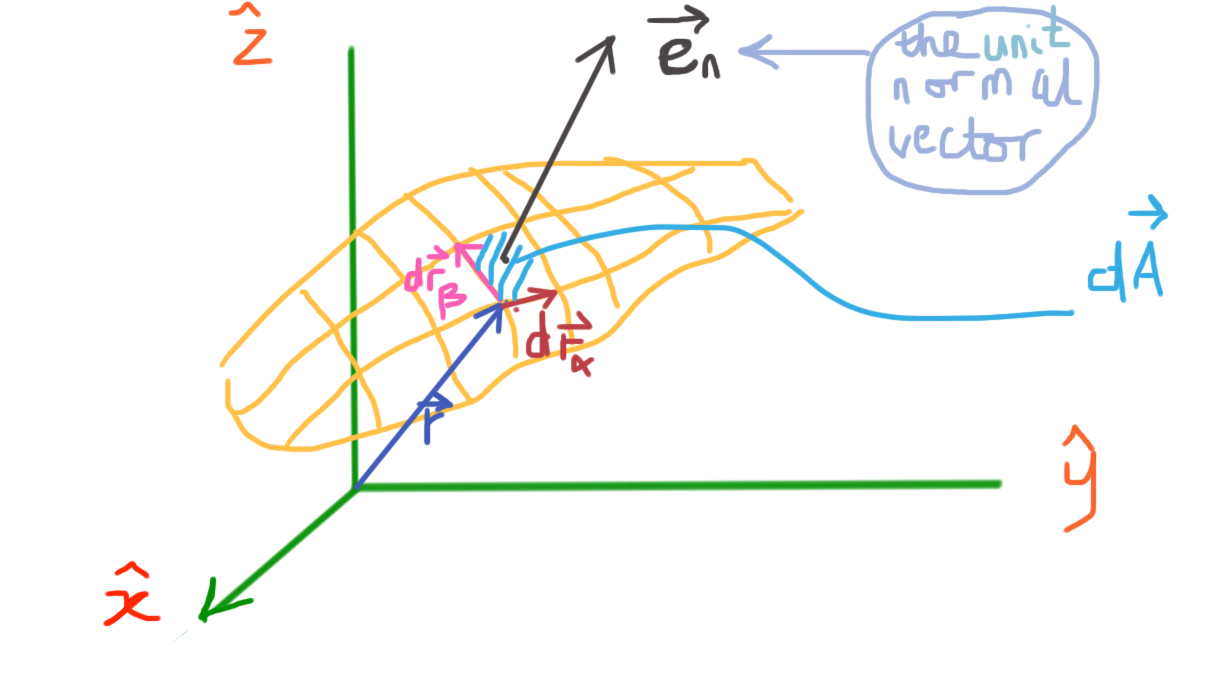How do you find the equations for the tangent plane to the surface #z=x^2-2xy+y^2# through (1,2,1)?
2 Answers
# -2x+2y-z = 1 #
Explanation:
First we rearrange the equation of the surface into the form
# z=x^2-2xy+y^2 #
# :. x^2-2xy+y^2-z = 0 #
And so we define our surface function,
# f(x,y,z) = x^2-2xy+y^2-z #
In order to find the normal at any particular point in vector space we use the Del, or gradient operator:
# grad f(x,y,z) = (partial f)/(partial x) hat(i) + (partial f)/(partial y) hat(j) + (partial f)/(partial z) hat(k) #
remember when partially differentiating that we differentiate wrt the variable in question whilst treating the other variables as constant. And so:
# grad f = ((partial)/(partial x) (x^2-2xy+y^2-z))hat(i) + #
# " " ((partial)/(partial y) (x^2-2xy+y^2-z))hat(j) + #
# " " ((partial)/(partial z) (x^2-2xy+y^2-z))hat(k) #
# " "= (2x-2y)hat(i) + (-2x+2y)hat(j) + (-1)hat(k) #
So for the particular point
# grad f(1,2,1) = (2-4)hat(i) +(-2+4)hat(j) -hat(k) #
# " " = -2hat(i) +2hat(j) -hat(k) #
So the tangent plane to the surface
# vec r * vec n = vec a * vec n #
Where
Hence, the tangent plane equation is:
# ((x),(y),(z)) * ( (-2), (2),(-1) ) = ((1),(2),(1)) * ( (-2), (2),(-1) ) #
# :. (x)(-2) + (y)(2) + (z)(-1) = (1)(-2) + (2)(2) + (1)(-1) #
# :. -2x+2y-z = -2+4-1 #
# :. -2x+2y-z = 1 #
We can confirm this graphically: Here is the surface with the normal vector:

and here is the surface with the tangent plane and the normal vector:

As an alternative approach, we can parameterise the surface in terms of
Noting that to first order :
-
#d mathbf r_alpha = (partial mathbf r)/(partial alpha) d alpha = langle 1,0,2 (alpha - beta) rangle d alpha# -
#d mathbf r_beta = (partial mathbf r)/(partial beta) d beta = langle 0,1,- 2 (alpha - beta) rangle d beta #
....we have this:

The shaded area is a vector,
We are not really bothered by the magnitide of
Now we know from the scalar dot product that, for a plane surface:
So we plug in


